385 Saving Native Breeds
SAVING OUR NATIVE DOG BREEDS
by David Hancock
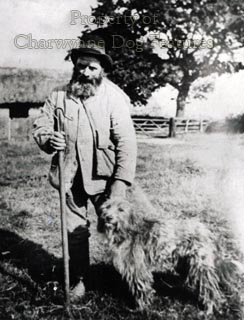 The inhabitants of the British Isles, whether Irish or British, have created a greater number of breeds of dog than those from any comparable area. Sadly some of these breeds are extinct, some have been subsumed into descendant breeds and some still exist but lack breed recognition in a formal sense. In the pastoral breeds, we have lost the Welsh Hillman, the Old Welsh Grey and the Black and Tan, the Smithfield Collie, the Glenwherry Collie and the Galway Sheepdog and nearly lost our Lancashire Heeler. In the hounds the deep-mouthed, fleet, Southern and Lancashire broken-coated types have probably been embraced by successor breeds. In terriers, the English White has been lost and the Cheshire not favoured. Any ban on hunting with dogs will threaten many extant sporting breeds.
The inhabitants of the British Isles, whether Irish or British, have created a greater number of breeds of dog than those from any comparable area. Sadly some of these breeds are extinct, some have been subsumed into descendant breeds and some still exist but lack breed recognition in a formal sense. In the pastoral breeds, we have lost the Welsh Hillman, the Old Welsh Grey and the Black and Tan, the Smithfield Collie, the Glenwherry Collie and the Galway Sheepdog and nearly lost our Lancashire Heeler. In the hounds the deep-mouthed, fleet, Southern and Lancashire broken-coated types have probably been embraced by successor breeds. In terriers, the English White has been lost and the Cheshire not favoured. Any ban on hunting with dogs will threaten many extant sporting breeds.
The Welsh Foxhound, the Studbook Harrier, the Dumfriesshire Foxhound, the West Country Harrier and the English Basset are by any genetic judgement distinct breeds and, as part of our sporting heritage deserve conservation. It could be argued that several foxhound packs each constitute a breed, especially when they are as distinctive as say the Tiverton and the Ebrington. In the terrier world, the Patterdale, Plummer, Sporting Lucas, Fell and Balla terriers have their own identity and in some cases a studbook. The Sporting Lucas Terrier is now registered with the United Kennel Club of America and has an accepted breed standard as part of that recognition.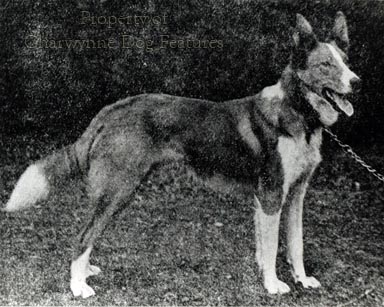
Before any show terrier breed fancier scoffs at the entitlement of breed for these dogs, questions on whether the Norfolk Terrier is truly a separate breed from the Norwich, whether the drop-eared Skye Terrier should have formed a separate breed and whether the recognition of the Cesky Terrier formed a stronger case than some comparably created British breeds should be addressed. Breed recognition often depended more on the enterprise, energy and determination of the fanciers than say a separate origin. Names too can be deceptive: the Border Terrier could well have been named the Reedwater, the Jack Russell the Heinemann Terrier and the Sealyham the Edwardes Terrier. But what are we doing to conserve our native breeds which have been recognised?
In 2001, the Kennel Club newly registered over 4,000 pointers from Germany against just over 700 of our own; over 500 American Cocker Spaniels against 70 Sussex Spaniels and more Brittanys than Field Spaniels. Shakespeare may have written that our mastiffs 'are of unmatchable courage' but the public prefer a German mastiff, the Great Dane, with over 1,700 of the latter registered each year, against less than 500 of our native breed. In the light of this, you could be forgiven for thinking that we are doing a great deal to perpetuate foreign breeds and very little to conserve our own native breeds. Even fifty years ago, the shooting men went for British gundogs; not any more. 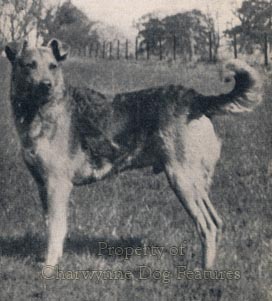
More Italian spinones and Hungarian vizslas are registered annually than four of our spaniel breeds. The preference for 'hunt, point and retrieve' breeds has largely caused this, but if our ancestors had needed an allrounder, they would have bred one themselves -- and it would have been a world-beater. Have our sportsmen lost their breeding skills as well as their patriotism? The Kennel Club once (despite losing the English White terrier) claimed that they had never lost a native breed from their lists but that is not due to their patriotic patronage but the devotion of committed fanciers.
The Kennel Club recognises over 50 breeds in their Working and Pastoral Group; 42 of them originated overseas. Of the 23 breeds in the Toy Group, 19 of them came from abroad. 24 of the 25 breeds in the Utility Group came to us from overseas. 26 of the 33 breeds in the Hound Group came from outside the United Kingdom. Every year more breeds come on to the register, some of them from strange backgrounds. The pretentiously named Pharoah hound is actually a rabbit dog from the Maltese islands; nearly 250 have been registered in the last ten years. Foreign breeders rarely let their best stock go; without long breeding records, who knows what 'genetic junk' we are introducing?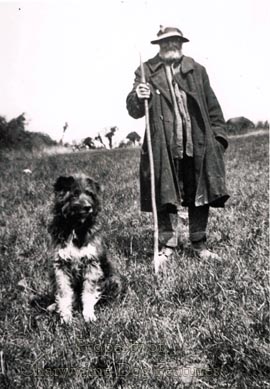
Against that background it is disturbing to check the registrations of those of our native breeds, with extremely long breeding records, with fewer than 200 being bred each year: the Curly-coated Retriever; Clumber, Field, Irish Water and Sussex Spaniels; Dandie Dinmont, Manchester, Norwich, Sealyham, Skye, English Toy (black and Tan) and miniature Bull Terriers; Smooth Collie, Otterhound, Bloodhound and Welsh Corgi (Cardigan). Their names alone usually show how British they are. Compare under 200 a year of each of them with the 14,000 German Shepherd Dogs, 9,000 German Boxers and over 5,000 Rottweilers newly registered each year.
As the Sealyham terrier fades (182 registered in 1989, only 62 in 2001) and the Dandie Dinmont terrier declines (256 in 1988, only 96 in 2001), we are importing the Cesky terrier, developed overseas from the Sealyham. As the Field Spaniel struggles to gain new owners (122 in 1989, against 73 in 2001), the Hungarian Vizsla goes from 223 in 1990 to 625 in 2001. We lost our English Water Spaniel but now import both the Portuguese and the Spanish Water Dogs. As the Smooth Collie goes from 148 registrations in 1989 to 58 in 2001, we import six times that number of Australian Shepherds, 315 in 1994. Seven times as many Siberian Huskies were registered here in 1998 than Skye Terriers. In such a way did we lose the English White Terrier, an elegant charming dog and a long established breed type.
In Japan, Portugal and Denmark they have national societies to protect and conserve their native breeds of dog. The Broholm mastiff in Denmark is not available for export because every dog in the breed is valued. There is no such national society in Britain. Through the admirable Rare Breeds Survival Trust we are commendably striving to conserve our Tamworth and Gloucester Old Spot pigs, Bagot goats, Shropshire sheep, Longhorn cattle and native breeds of poultry, but who is going to protect our precious breeds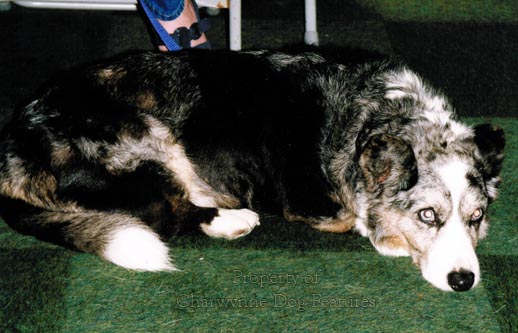 of native dog, recognised or unrecognised, as indifference and exotic preferences ensure their demise? They too are part of our heritage.
of native dog, recognised or unrecognised, as indifference and exotic preferences ensure their demise? They too are part of our heritage.
Fortunately there are some artisan breeders already at work restoring the Sealyham Terrier to its working design, resurrecting the very attractive Sporting Lucas Terrier and promoting the Patterdale. The country sports writer Brian Plummer, blending skill, knowledge, vision and enterprise, has developed his own breed of terrier, named after him and predictably well respected by those who work their dogs. But where are the landed gentry in such work? Where are the successors to the likes of the Duke of Gordon and his setters, the Duke of Newcastle and his Clumbers, the Earls of Southesk and Carlisle and Lord Ossulton and their setters, Lord Orford and his greyhounds, Lord Tweedmouth and his golden retrievers and Lord Knutsford and his Labradors?
Without leadership, either from a traditional source or from the Kennel Club, which sees no role for itself in conserving historic British breeds, how can we put this right? We probably need, first of all, a new kind of Kennel Club dedicated to the remaining British sporting breeds and their survival. Is this something for the BFSS to foster? The American Kennel Club does not have the monopoly which ours exploits, indeed one of the AKC's rival organisations, the United Kennel Club, registers more dogs annually than our KC and licences most of the working activities there. An enterprising and enlightened dog food manufacturer would find good rewards from the sponsorship of such a worthy organisation as a new more patriotic Sporting Kennel Club in Britain.
Secondly there is a need to restrict the entirely capricious and wholly unjustified importation of fresh foreign breeds into this country. In the gundog world, coming along behind the German short-haired pointers are the Stichelhaars and the Langhaars, behind the Large Munsterlander is the small variety and then there are the French pointers: the Braque D'Auvergne, the Braque St.Germain and the two sizes of Braque Francais, and the Epagneuls: Picard, de Pont-Audemer and Francais, as well as the Dutch dogs: the Stabyhoun and the Drentse Patrijshond--we could be overwhelmed!
The Federation Cynologique Internationale (FCI) or world kennel club, recognises 340 breeds, well over twice the number recognised by our KC and the American KC. But the FCI has at last acknowledged the need to restrict the number of new breeds it accepts. It now demands a minimum of eight distinct bloodlines, at least a thousand dogs registered and evidence of control of hereditary problems. Against those criteria, breeds like the Chinese Shar Pei would never be allowed in here.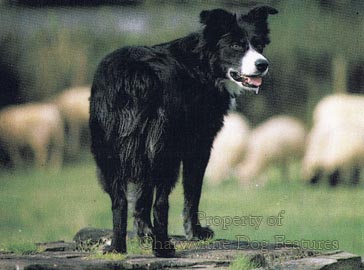
Thirdly there is a need to counter the ignorance of old British breeds. Why import a Stumpytail Cattle Dog from Australia when the lookalike bob-tailed sheepdogs of the Black Mountain on the Herefordshire border are being neglected? Why import the Petit Brabancon (the smooth toy griffon) when our comparable English Toy Terrier is losing ground? Why import a Hamiltonstovare from Sweden when our similar Stud-book Harrier is so handsome and well bred? We lose our sedge-coloured Norfolk retriever and then import a sedge-coloured retriever, the Chesapeake Bay, from Norfolk, Virginia. We lose our red decoy-dog and then import a red Nova Scotia Duck-Tolling Retriever with an identical role.
For a nation accused of living in the past, we are paradoxically fast losing our living heritage. In thirty years time, when Britain is aghast at the incidence of inherited diseases in pedigree dogs, the loss of genetically-healthy age-old proven breeds of our native dogs will really be felt, and we only have ourselves to blame. The Clapheaton Terrier may never become an accepted breed, but the English Basset is physically sounder than any show ring Basset. The minkhound and the staghound of today may only represent a function rather than a breed and the buckhound never possessed an identity of its own. But the Otterhound has been thankfully saved by an admirable bunch of followers, despite rightly losing its original role. 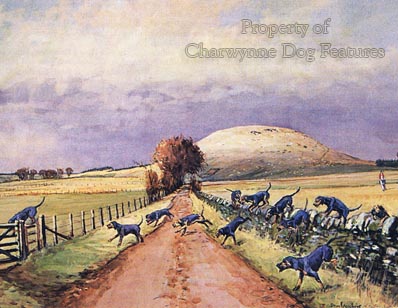
Meanwhile, despite Britain's unique role in the development of the terrier function, more terrier breeds are being recognised abroad, as the Rat Terrier, Toy Fox Terrier and Brazilian Terrier demonstrate across the Atlantic. The Kennel Club recognises the Russian Black Terrier, created by geneticists and not for the terrier role, but not half a dozen native terrier breeds which excel in the terrier role. I welcome the Russian breed but question our national wisdom in ignoring our excellent working terrier breeds. Allowing old native pastoral breeds to fade away is tantamount to neglect of our national heritage and needs our attention. Letting hound 'breeds' of superlative quality disappear would be surely a national disgrace.
When I express my admiration for foreign breeds to their owners abroad, they immmediately point out that we here have an equally good substitute. There is more glamour perhaps in parading a Mongolian Yak Herder than a Smithfield Sheepdog, which hardly sounds as exotic. But we have to ask ourselves how and why the Mongolian dog survived whilst the Smithfield one did not. As the estimable Dr Caius recorded, in connection with the British and their dogs, several centuries ago: "...we Englishe men are Maruaious greedy gaping gluttons after nouelties, And couetous covrorauntes of things that be seldom, Rare, straunge, and hard to get."
In our pursuit of novelties and covetousness of rare things we would be very foolish indeed to prize and promote the dog breeds of other nations to the detriment of our own. The seeking of the exotic should not punish the long-serving locals in any walk of life. But if we are to conserve quite a number of our native breeds of dog, there is much to be done. It needs inspired individuals ahead of organisations lacking their enterprise, as always; but what an admirable quest. For our native breeds of dog to be under-rated and undervalued at home is surely a sad reflection on the state of the nation.